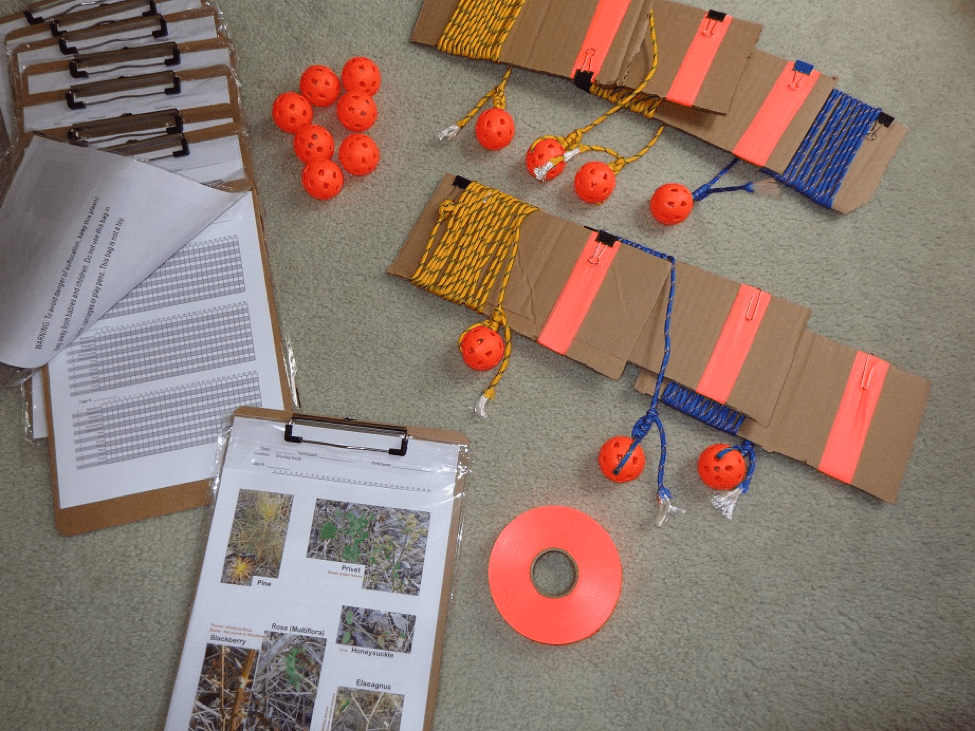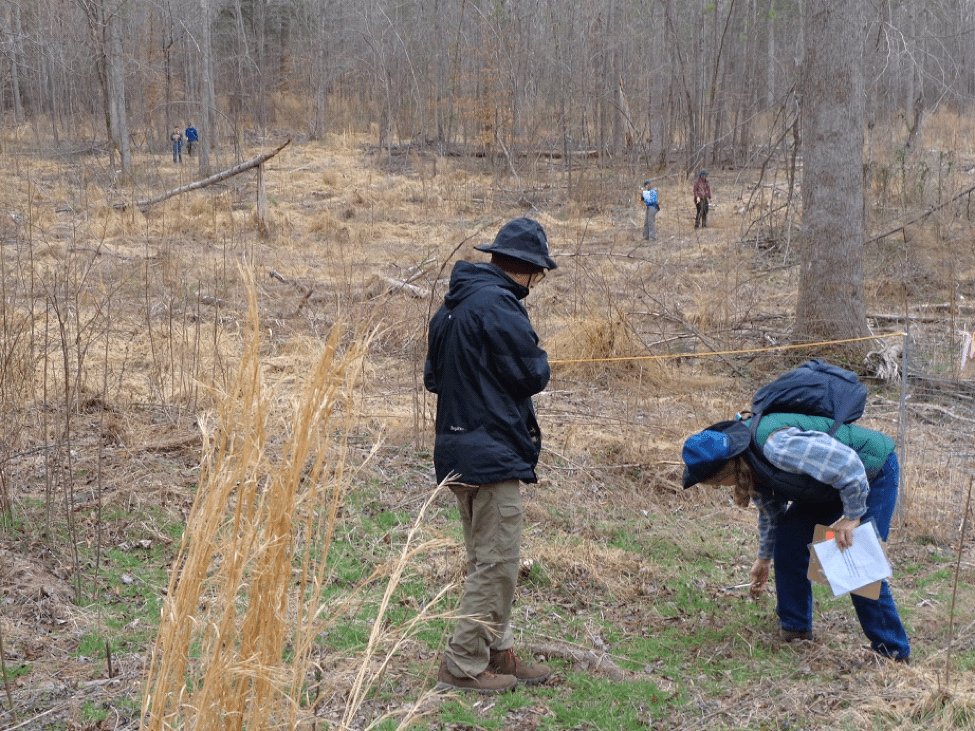By Steve Emery – Volunteer event leader – March 3, 2019
We had a great group of volunteers show up for our first data collection event. With rain threatening, and a sprinkle or two while we worked, we still had a full group of 12 counters.

We did the work at the reforestation project near the pond and powerlines in Brumley Nature Preserve’s South section. This is an area that was planted with Loblolly pine several years ago by previous landowners and subsequently thinned by TLC in order to plant with hundreds of native deciduous trees, and some pines of another species, for diversity. The young trees are in cages to protect them from deer cropping. The cages, and later the trees, will serve as anchor points for plant counts over time.
In teams of two, one to count and one to run the clip-board and record, we counted six of the key species that can threaten the young trees’ development by competing for resources or damaging the young trunks.
Home-made measuring kits were constructed of 4 meters of parachute rope, day-glo orange practice golf balls, and binder clips. Teams used these to make a circular sweep around each tree cage, counting the six species chosen for this round, recording with “X” or “/” in the grids on the clip-boards. If a team had any doubt about their counts, they would switch roles and count a second time. There was also a simple one page field guide, with photos taken from the site, of the species we would be counting.

In about an hour the teams counted plants in 22 of the eight meter circles, carefully examining over 1100 square meters of ground. This data, expanded over the entire area (several hundred cages) will then be mapped to show average plant densities. Recounts in later years will help us understand the spread and growth of these plants at Brumley Nature Preserve. Photos will also be taken of each cage region, once the plants are in full leaf, and this evidence will also be collected over multiple years. This helps TLC decide when to do invasive interventions, and improves prediction and planning.
This round we were counting Chinese privet (Ligustrum sinense), elaeagnus (umbellata), blackberry (Rubus sp.), multiflora rose (Rosa multiflora), honeysuckle (Lonicera japonica), and pines (Pinus sp. – mostly taeda). Future data collection days will measure additional cages and add species, including sweetgum (Liquidambar styraciflua).
Thanks to our generous volunteers, many of whom knew more than I did about the plants we were counting and others we passed on the way! There was lots of exchanged knowledge and we had a good time on the walk over and back. We hope to see many of you for the next round.

